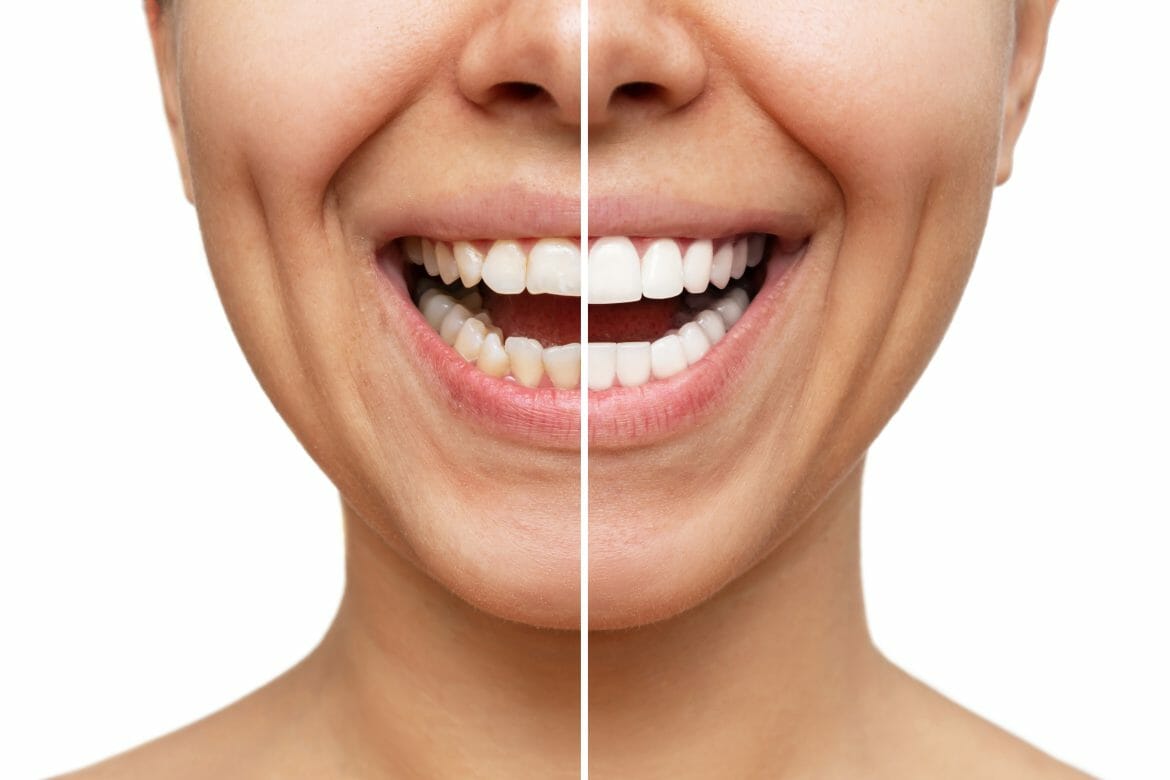Do you often find yourself shying away from pictures or hiding your smile because of chipped, discolored, or uneven teeth? You’re not alone. Many people struggle with insecurities related to their teeth. Fortunately, porcelain veneers offer a solution for achieving that perfect Hollywood smile. In this blog, we will cover everything you need to know about porcelain veneers – how they are made, their durability, and whether they are the right choice for you. We’ll also examine the veneer procedure, including preparation, application, and recovery stages. Lastly, we will address any potential risks or complications associated with porcelain veneers and whether they can be reversed.
Understanding Porcelain Veneers
Porcelain veneers, custom-made thin shells, are bonded to the front surface of teeth. They enhance the appearance of teeth by altering their shape, size, color, and alignment. Made from a durable material resembling natural tooth enamel, porcelain veneers are stain-resistant, ensuring a long-lasting solution for a perfect smile. Dentists utilize digital technology to create precise veneers that seamlessly fit with your natural teeth. With their expertise in cosmetic dentistry, they ensure the best smile design for you. Using NLP techniques, they can determine the optimal number of veneers and perform tooth preparation if required. The dental veneer procedure, including consultation, preparation, placement, and follow-up, is performed with utmost care and precision.
The Durability of Porcelain Veneers
Porcelain veneers are highly regarded for their exceptional durability and resistance to discoloration. These veneers can last 10-15 years or even longer when properly cared for and with good oral hygiene practices. They are designed to resist stains caused by commonly consumed beverages such as coffee, tea, and red wine. Moreover, the material used for veneers is incredibly resilient, making them highly resistant to chipping and cracking. However, it is essential to note that regular dental check-ups and maintenance are crucial to ensuring the long-lasting durability of porcelain veneers.
A Detailed Look at the Veneer Procedure
The veneer procedure involves three stages: preparation, application, and recovery. In the preparation stage, a thin layer of enamel is removed from the front surface of the teeth to create space for the veneers. The veneers are bonded to the teeth using dental cement and a special light during the application stage. After the placement, patients may experience temporary sensitivity, which typically subsides within a few days. To ensure optimal healing and long-lasting results, following the dentist’s post-procedure instructions is crucial. This detailed look at the veneer procedure showcases the meticulous process of achieving a perfect smile.
Preparation Stage
During the preparation stage, the dentist gently removes a small amount of enamel from the teeth to create space for the porcelain veneers. Impressions of the prepared teeth are taken to create custom-made veneers that will fit perfectly. Temporary veneers may be placed to protect the teeth while the permanent ones are being created in the dental lab. This stage ensures that the veneers will blend seamlessly with the rest of the teeth and meet the patient’s desired shape, size, and color. It’s an essential step in the overall process of achieving a flawless smile.
Application Stage
During the application stage, the dentist cleans and etches the teeth, ensuring proper bonding. Dental cement is applied to the veneers, which are then carefully placed on the teeth. The cement is cured and hardened using a special light, creating a strong bond. The dentist makes necessary adjustments for a comfortable fit and natural appearance. Patients witness immediate results as their smile is transformed with the placement of the veneers. This stage requires precision and expertise in dentistry, ensuring that the veneers are securely attached and seamlessly integrated into the patient’s smile. The entire tooth preparation process and veneer placement are carried out according to the guidelines recommended by the American Dental Association and the American Academy of Cosmetic Dentistry.
Recovery Stage
During the recovery stage of the dental veneer procedure, patients may experience temporary sensitivity to hot or cold temperatures. It is important to adhere to any post-procedure instructions provided by the dentist for proper recovery. Maintaining good oral hygiene, including regular brushing and flossing, is crucial for the longevity of the veneers. Follow-up appointments with the dentist should be scheduled to monitor the condition of the veneers. With proper care, this recovery stage ensures that the veneers settle comfortably and provide a natural-looking smile.
How to Maintain Your New Smile Post-Procedure
Maintaining your new smile post-procedure is essential to ensure the longevity and beauty of your porcelain veneers. Practice good oral hygiene by brushing and flossing regularly to keep them pristine. It’s also important to avoid chewing on hard objects that could damage the veneers. Regular check-ups and cleanings with your dentist will help monitor the health of your veneers and address any issues promptly. Additionally, use a non-abrasive toothpaste to prevent scratching the surface of the veneers. To maintain the color of your veneers, limit the consumption of staining beverages such as red wine or coffee. Following these care guidelines allows you to enjoy your new smile for years.
Conclusion
In conclusion, porcelain veneers offer a perfect smile solution for those looking to enhance their appearance and boost their confidence. With their natural-looking appearance and durability, porcelain veneers can transform your smile and improve your oral health. It’s essential to consult a qualified dentist to determine if porcelain veneers are the right choice for you and to understand the detailed procedure. Additionally, maintaining good oral hygiene and regular dental check-ups are essential for prolonging the lifespan of your veneers. While porcelain veneers are a long-term solution, it’s essential to be aware of potential risks and complications that may arise. However, in skilled hands, reversing porcelain veneers can be possible if needed. Contact us today at Bateson Dentistry!
